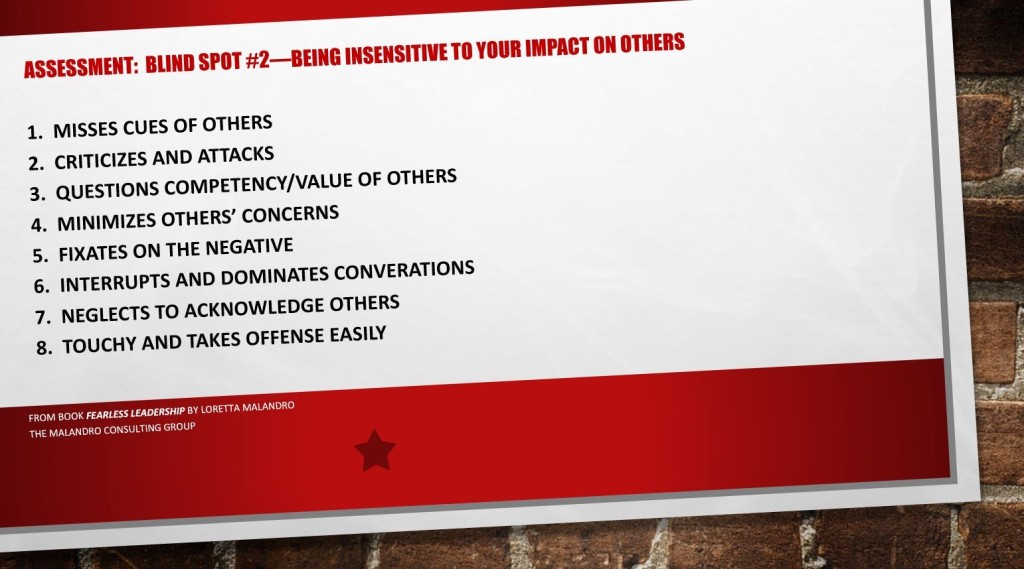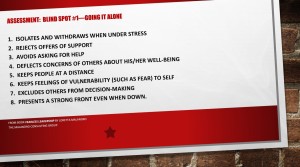
This is the second of 10 blind spots that can sabotage your effectiveness.
Blind Spot #2—Being Insensitive to Your Impact on Others. What It Means.
Do you miss the verbal and nonverbal cues of others? If you do, you may have a low threshold for recognizing when your own words and behaviors have a less-than-desirable impact.
If you have this second blind spot—being insensitive to your impact on others—it means one of two things: 1) You lack awareness about how your behavior affects others, or 2) You lack the skills to know how to change your behavior to have a positive impact.
The Downside of Missing or Ignoring Cues
Are you shocked by how people react to things you say or do? If you are, you may be insensitive to your impact on others. Although your intention is not to provoke a negative reaction in people, your behavior sends a different message.
If you are insensitive to others, it’s likely that you do not recognize how your words or actions make people feel. You will miss important cues and you will leave people feeling irritated, resentful, disrespected, angry, or hurt.
Are YOU Insensitive to Your Impact on Others?
Ask others to assess your behavior using the scale of 1 (rarely) to 5 (frequently).
How do you rate?
32 to 40: Warning—your insensitivity is highly insensitive. You miss even the most basic cues from others. Read this several times.
17 to 31: You are basically a sensitive person with insensitive behaviors. Close the gap.
8 to 16: You pick up the cues of others and respond appropriately. Keep refining your skills.
Want More?
Read the book Fearless Leadership and the anti-blogs on The 10 Blind Spots.






